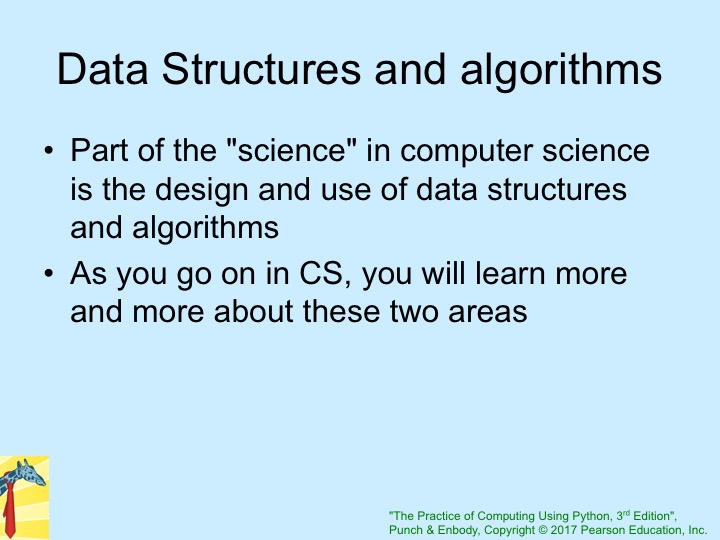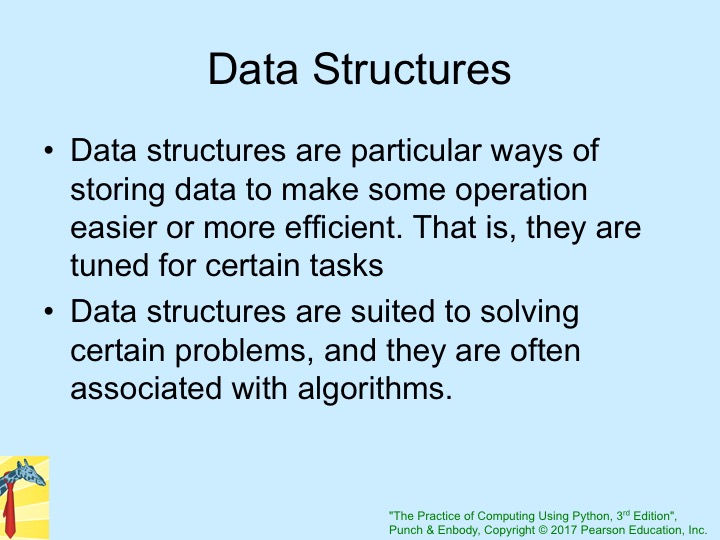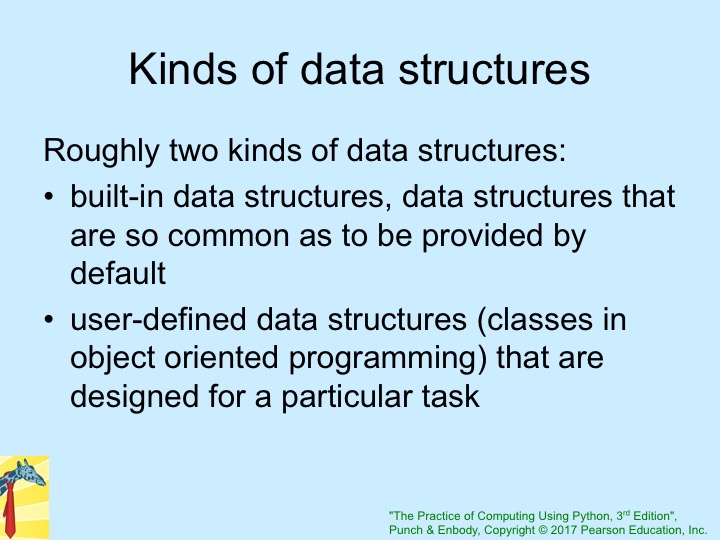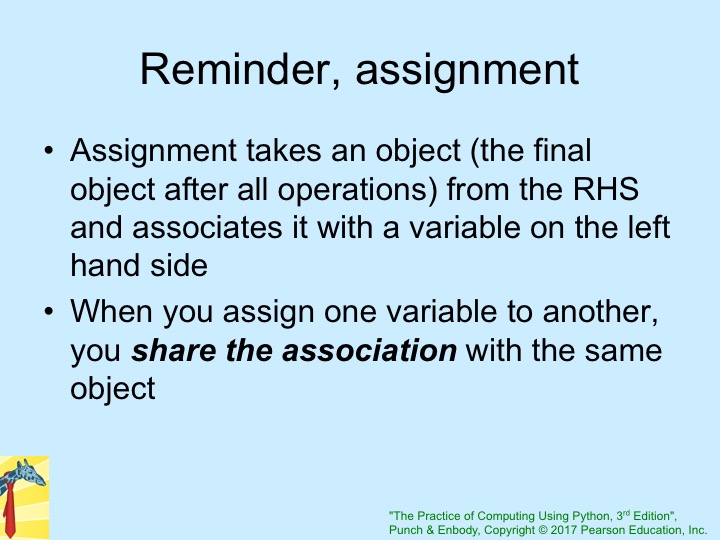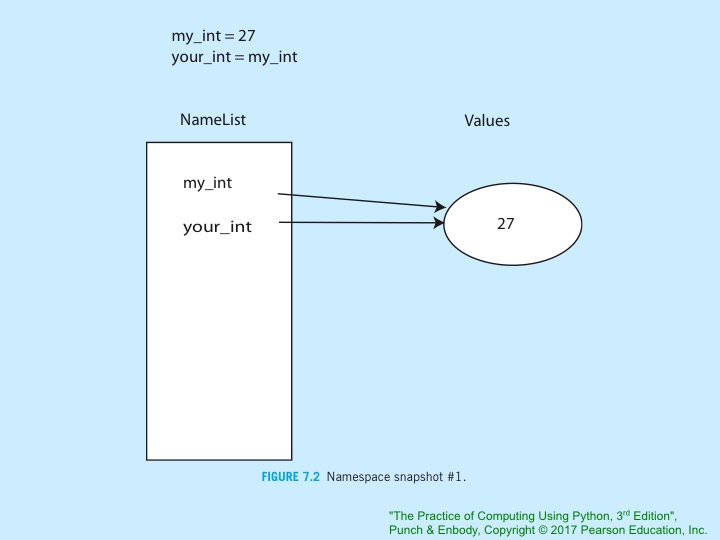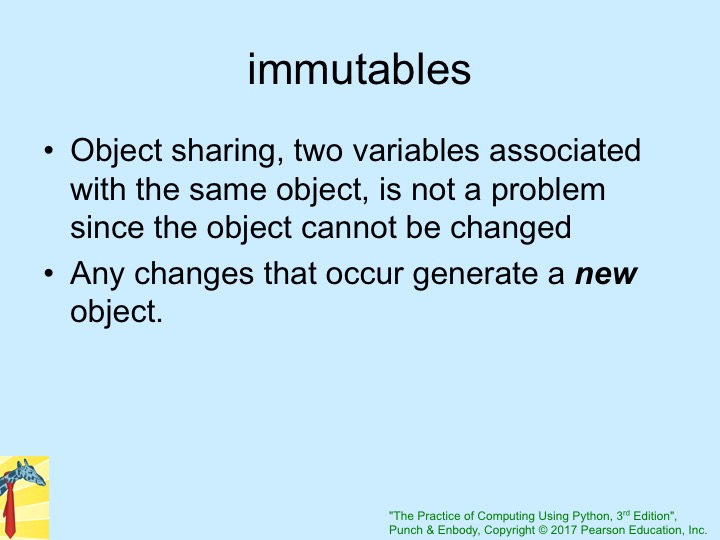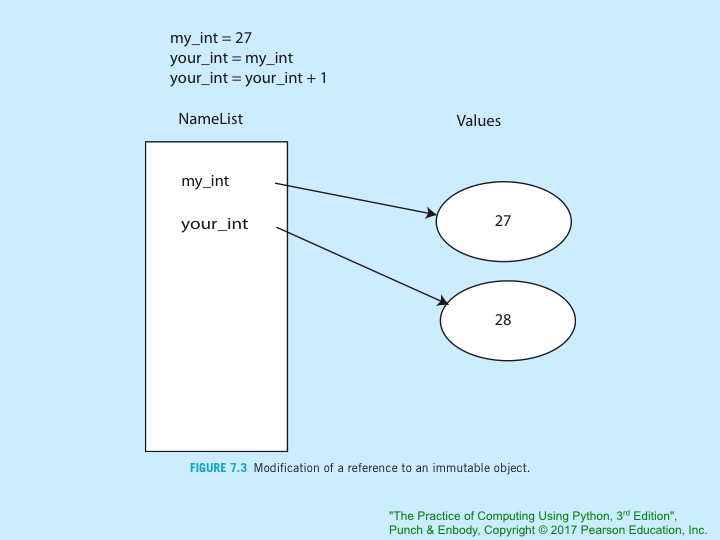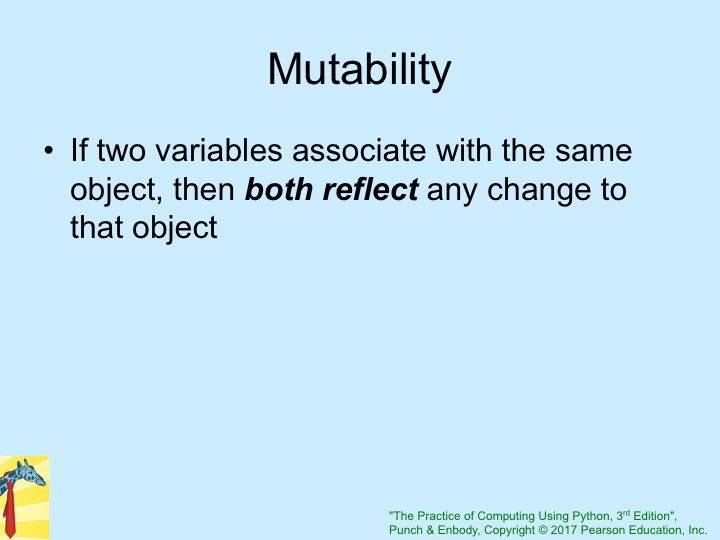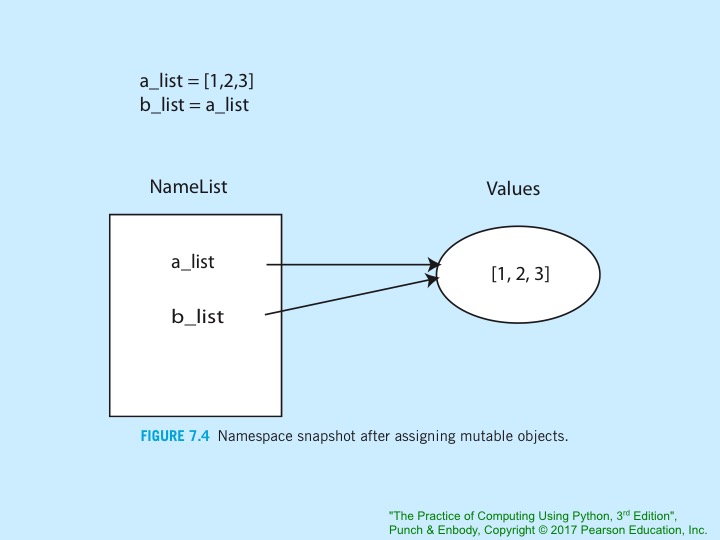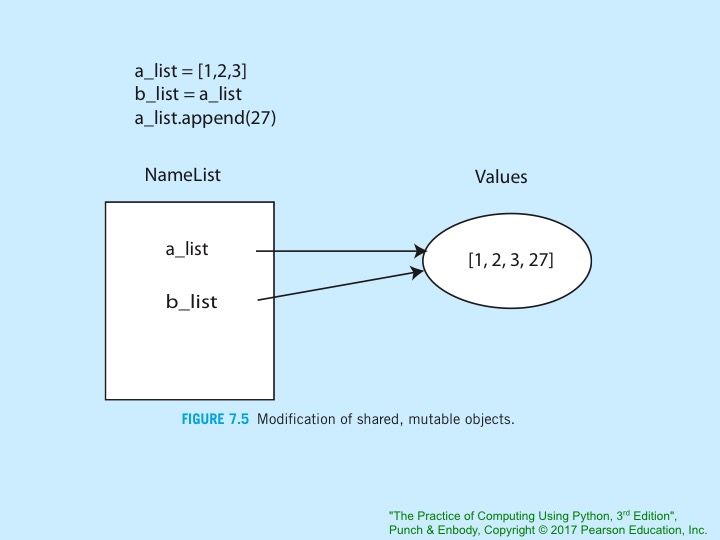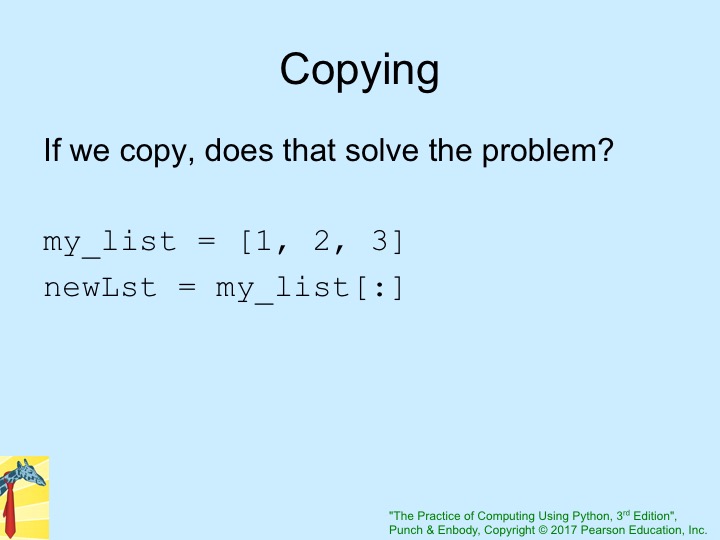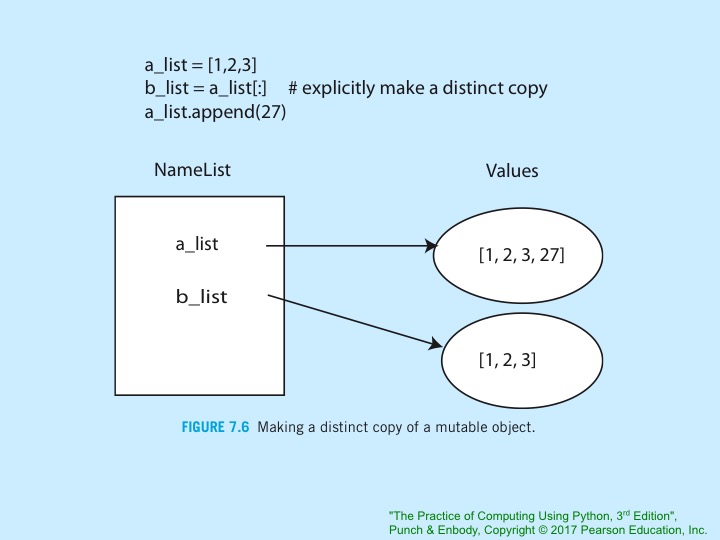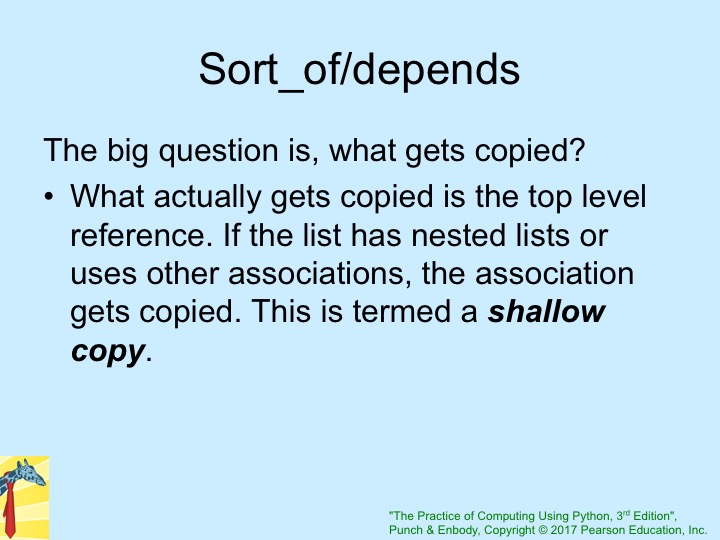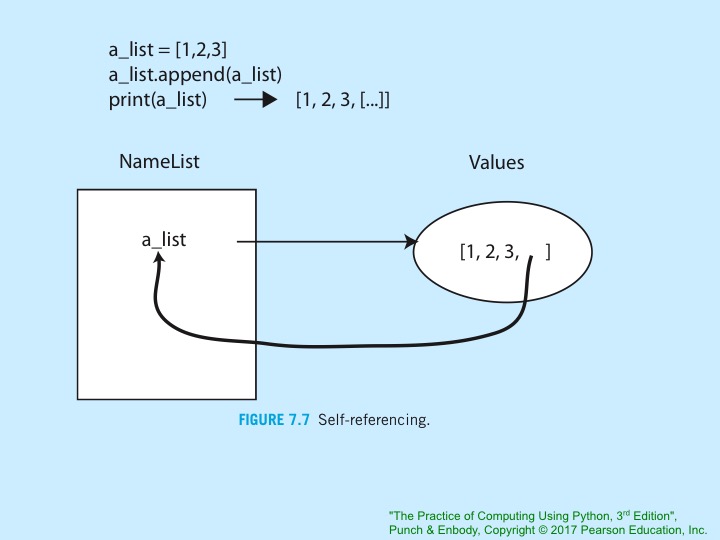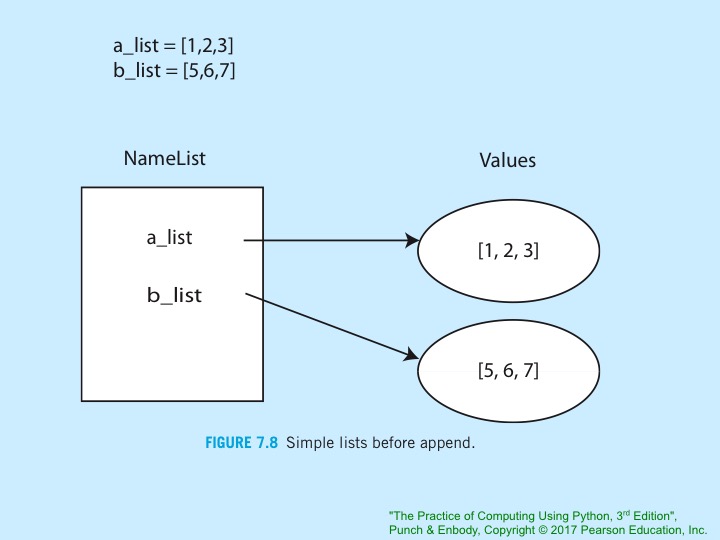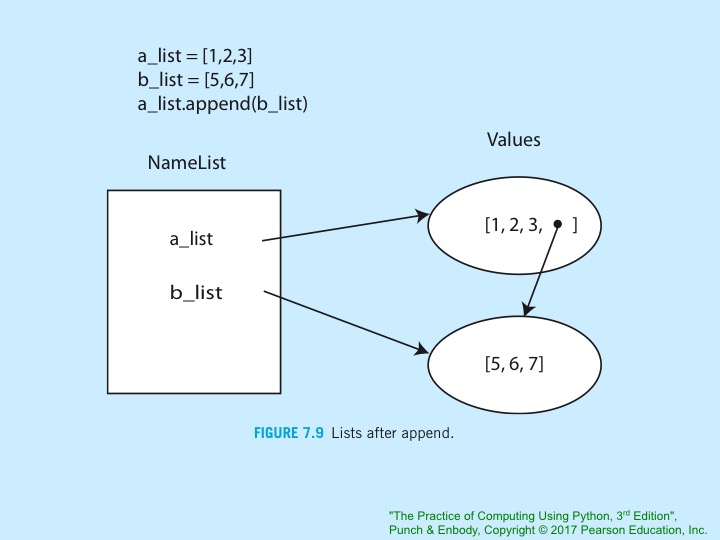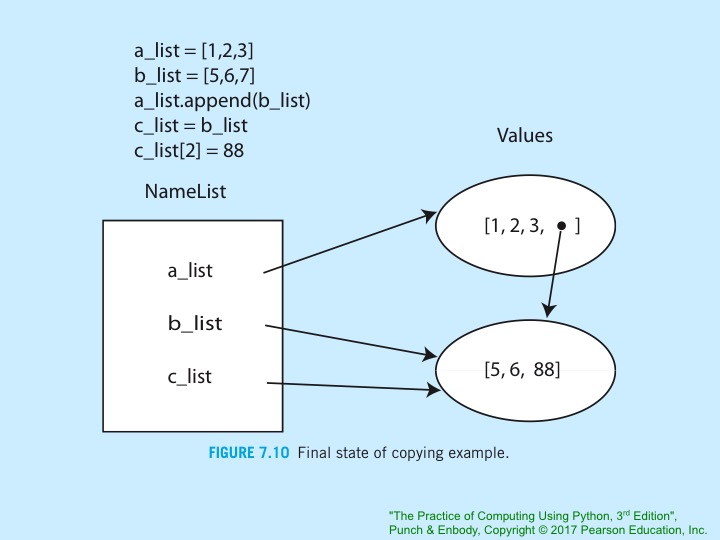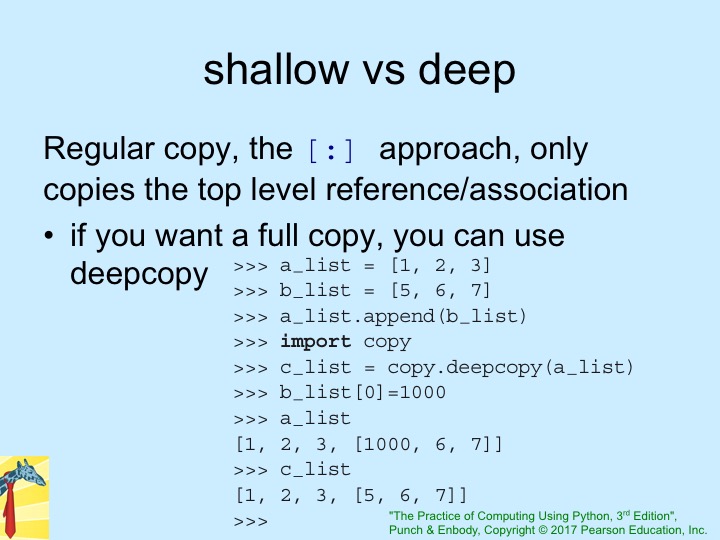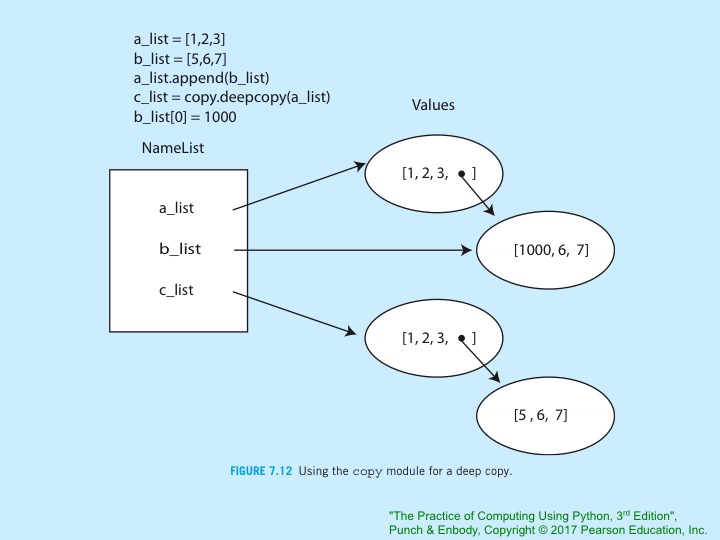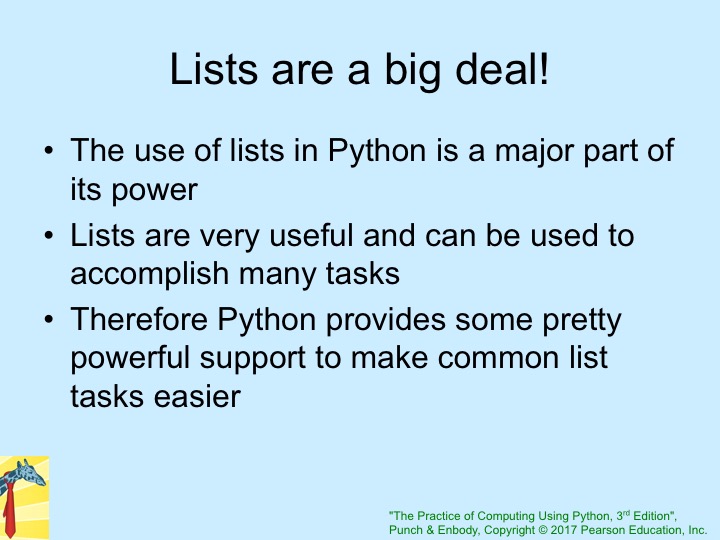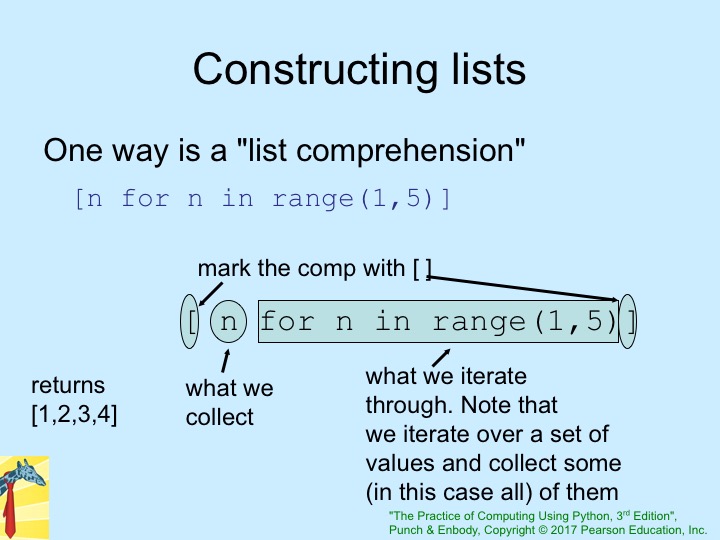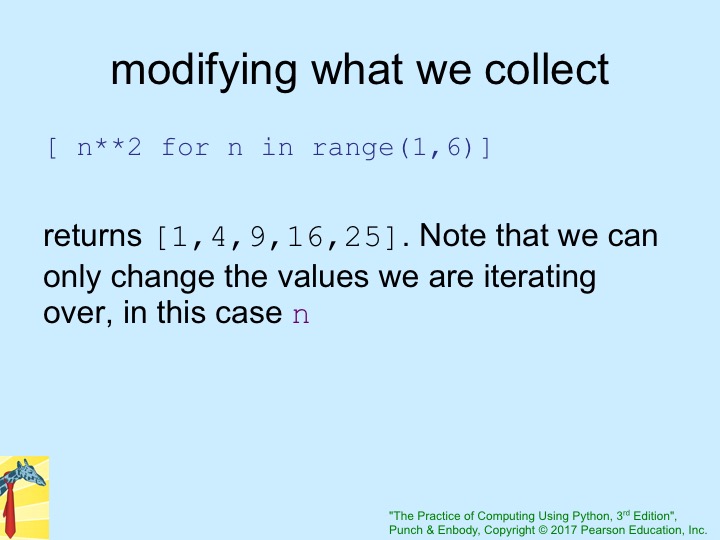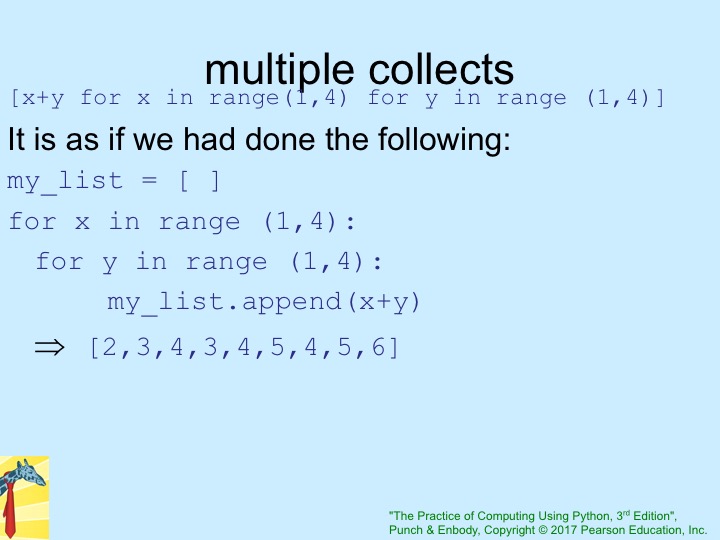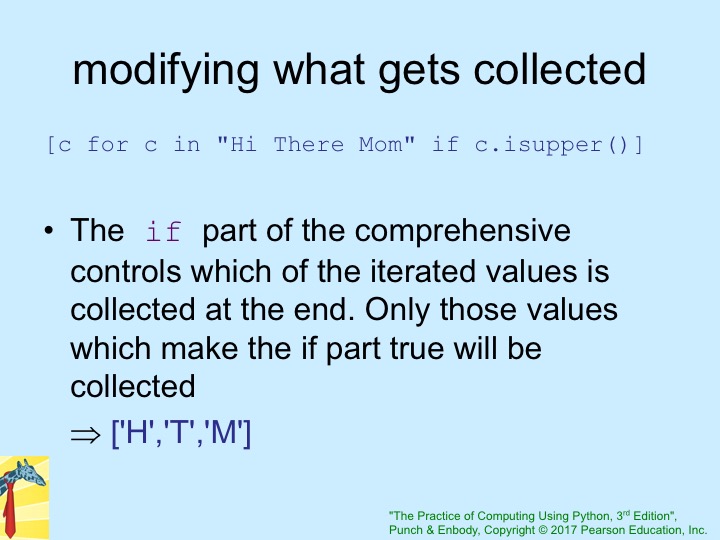%%html
<style>
.example1 {
height: 50px;
overflow: hidden;
position: relative;
}
.example1 h3 {
font-size: 3em;
color: red;
position: absolute;
width: 100%;
height: 100%;
margin: 0;
line-height: 50px;
text-align: center;
/* Starting position */
-moz-transform:translateX(100%);
-webkit-transform:translateX(100%);
transform:translateX(100%);
/* Apply animation to this element */
-moz-animation: example1 15s linear infinite;
-webkit-animation: example1 15s linear infinite;
animation: example1 15s linear infinite;
}
/* Move it (define the animation) */
@-moz-keyframes example1 {
0% { -moz-transform: translateX(100%); }
100% { -moz-transform: translateX(-100%); }
}
@-webkit-keyframes example1 {
0% { -webkit-transform: translateX(100%); }
100% { -webkit-transform: translateX(-100%); }
}
@keyframes example1 {
0% {
-moz-transform: translateX(100%); /* Firefox bug fix */
-webkit-transform: translateX(100%); /* Firefox bug fix */
transform: translateX(100%);
}
100% {
-moz-transform: translateX(-100%); /* Firefox bug fix */
-webkit-transform: translateX(-100%); /* Firefox bug fix */
transform: translateX(-100%);
}
}
</style>
Introduction to Computing for Engineers and Computer Scientists
Chapters 6, 7: Files, Exceptions, Lists
Introduction to Computing for Engineers and Computer Scientists
Chapters 6, 7: Files, Exceptions, Lists
Introduction to Exceptions (Continued)¶
Overview¶
From Punch and Enbody, chpt. 6.
- Most modern languages provide methods to deal with ‘exceptional’ situations
- Gives the programmer the option to keep the user from having the program stop (die) without warning or explanation. The programmer codes the program to:
- Retry failed condition.
- Terminate gracefully and with an understandable explanation instead of cryptic system error.
- "Again, this is not about fundamental CS, but about doing a better job as a programmer."
- I strongly disagree.
- This is fundamental. Software and programs are everywhere and critical.
- Robust, reliable programs can be the difference between life and death.
- This is what makes us engineers.
 |
|---|
| Weinberg's Second Law |
- What constitutes an exception?
- There are many common ones that programs commonly experience
- User enters invalid data.
- Variable is wrong type.
- for loop range index outside a list.
- File not found on open.
- ... ...
- Developers can define their own exceptions to handle failures or errors in their application logic or input data.
- There are many common ones that programs commonly experience
- Error and exceptions have specific names. You have seen many when your programs fail to execute. You have posted many of the errors on Piazza.
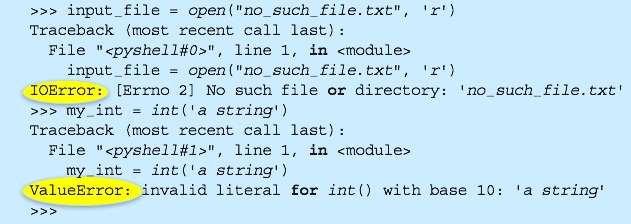 |
|---|
| Error Names (Punch and Enbody) |
- Python has a predefined hierarchy of built-in exceptions.
- Programmers can extend with application defined exceptions.
- Fully understanding the hierarchy concept and programmer defined extensions requires understanding python classes (Punch and Enbody, chapters 11,12). We will cover in future lectures.
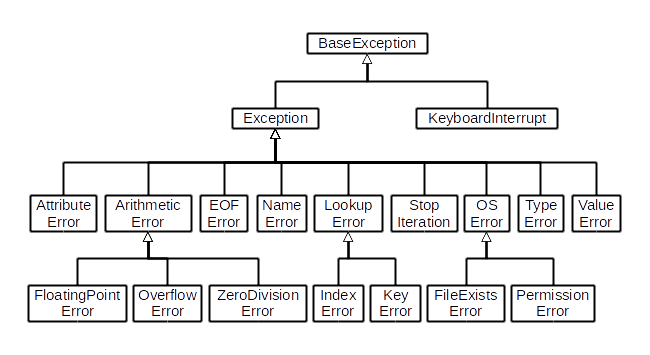 |
|---|
| (Partial) Exception Hierarchy |
Exceptions and Exception Handling¶
- Basic idea:
- Brackets and keep watch on a particular section (block, suite) of code.
- If we get an exception, raise/throw that exception (let it be known)
- Look for a catcher that can handle that kind of exception
- If found, handle it, otherwise let Python handle it (which usually halts the program)
- For example,
- We have assumed that the input we receive is correct (from a file, from the user).
- This is almost never true. There is always the chance that the input could be wrong.
- Our programs should be able to handle this.
- "Writing Secure Code”, by Howard and LeBlanc, ISBN 978-0735617223.
- “All input is evil until proven otherwise.”
- Many security holes in programs are based on assumptions programmers make about input.
- Secure programs protect themselves from evil input.
< DFF-Non-Textbook-Digression >
- For example,
- "Fuzzing or fuzz testing is an automated software testing technique that involves providing invalid, unexpected, or random data as inputs to a computer program."
- "Fuzzing is used mostly as an automated technique to expose vulnerabilities in security-critical programs that might be exploited with malicious intent."
- Both "good guys" and "bad guys" use fuzzing.
< /DFF-Non-Textbook-Digression >
%%HTML
<!-- HTML -->
<div style="height:85px; color:red" class="example1">
<h3>Rule 7: All input is evil until proven otherwise.</h3>
</div>
Implementing (Handling) |Exceptions¶
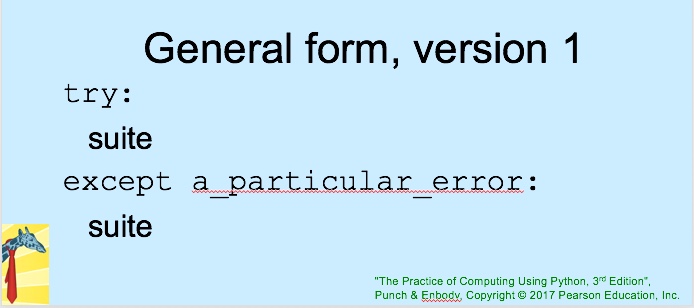 |
|---|
| Exceptions Form 1 |
- try suite
- The try suite contains code that we want to monitor for errors during its execution.
- If an error occurs anywhere in that try suite, Python looks for a handler that can deal with the error.
- If no special handler exists, Python handles it, meaning the program halts and with an error message as we have seen so many times
- except suite
- An except suite (perhaps multiple except suites) is associated with a try suite.
- Each exception names a type of exception it is monitoring for.
- If the error that occurs in the try suite matches the type of exception, then that except suite is activated.
Example 1: Extending Our First Program
# This program allows a user to input the radius on a circle.
# We want to teach the formula to young children. So, we only
# allow the radius to be an integer.
# Almost every program you write will use "programs" others have written.
# Your successful programs will become programs that others use.
# Any non-trivial program requires a team. The team members assemble
# the solution from individual subcomponents they build.
# The subcomponents and reusable parts are called modules.
import math # We just imported our first module.
# Programs, like mathematical functions, are only useful if they
# operate on many user provided inputs. To start, we will get the input from
# the "command line."
done = False
error_count = 0
self_destruct = False
while not done:
try:
# If the self-destruct sequence is initiated. Trigger an exception
# that does not have an except clause. NOTE: This is a joke.
# No one every programs this way. The code would raise an exception.
if self_destruct:
x = 1 / 0
# Print a prompt asking for the radius.
# Set a variable to the input value.
radius_str = input('Enter the radius of a circle: ')
# We are going to do 'math' on the input. So, we should
# covert it to an Integer.
radius_int = int(radius_str)
# The circumfrence is 2 times pi time the radius.
# The area is pi * r squared.
circumference = 2 * math.pi * radius_int
area = math.pi * (radius_int ** 2)
# Python conventions do not like lines that are too long.
# \ means that we will continue the command on the next line.
print ("The cirumference is:",circumference, \
", and the area is:",area)
done = True
# Hand the case where converting to an integer failed. This is an example of
# "Duck Typing." I try to treat the value as an int, and catch an exception
# if it fails.
except ValueError as e1:
error_count = error_count + 1
if (error_count == 1):
print("\nInvalid type. You need to enter an integer.")
elif error_count == 2:
print("\nInvalid type. What part of integer did you not understand?")
elif error_count == 3:
print("\nSeriously? I cannot work like this. I am a professional.")
print("Next time you do this I divide by 0!")
else:
print("\n Self-destruct sequence started.")
self_destruct = True
# Again, this is a joke. No one programs this way.
except Exception as e:
print("\nException = ", e)
print("Self-destruct complete.")
break
finally:
print('\n Finally always called.')
Example 2: Generic Input Function
# Validates integer input. Reusable in many places in a program or other programs.
# Prompt is the message for soliciting user input.
# lbound is the lower bound.
# ubound is the upper bound.
# patience is the number of times to let the user input a value.
def safe_get_int(prompt, lbound, ubound, patience):
done = False
result = None
temp = None
tries = 0
# Loop until successful input or have exhausted all the tries.
while (not done) and (tries <= patience):
# The try ... except implements toleration for non-integer inputs.
try:
tries += 1
temp = input(prompt + ":")
# This is the statement that would trigger the exception if not an int.
temp = int(temp)
# The value is an int -> No exception thrown. Is the value in the range.
if (temp < lbound) or (temp > ubound):
print("Valid range is " + str(lbound) + " to " + str(ubound) + " Try again.")
else:
done = True
result = temp
except TypeError as ve:
# Not an integer. Will try again.
# Will print a specific error message.
print("Input must be an integer.")
except Exception as e:
# Not sure what happened but will try again.
print("Got an expected exception. Trying again.")
# Did the function fail in getting a valid input?
# Will re-raise value error. Typically, we would raise a programmer defined exception.
if not done:
# Not my finest error message.
print("Prepare to die fool!")
raise ValueError("Die fool!")
return result
# Prompts for a string input. The inputs are:
# - prompt message
# - An optional list of valid inputs.
# - The number of base inputs to tolerate.
def safe_get_string(prompt, valid_values, patience):
done = False
result = None
temp = None
tries = 0
# Loop until valid input or too many failed attempts.
while (not done) and (tries <= patience):
try:
tries += 1
temp = input(prompt + ":")
if not temp in valid_values:
print("Valid values are ", valid_values)
else:
done = True
result = temp
# Should narrow this exception to something more specific
except Exception as e:
print("Got exception. Trying again.")
# Raise input value failure.
if not done:
print("Prepare to die fool!")
raise ValueError("Die you string entering fool!")
return result
x = safe_get_int("Please enter an integer. I am not going to tell you the range", 1, 252, 3)
print("Input was = ", x)
What Does This Have to Do With Files?¶
- File not found is a very common error.
- Bad data inside the file is also a common problem.
done = False
while not done:
try:
print("Whatever you do, do not choose file L5_collation.jpeg.")
fn = input("Please enter a file name?")
print("You entered ...", fn)
f = open(fn,"r")
print("\nReading file.")
for s in f:
print("A line = ",s)
print("Done")
done = True
except FileNotFoundError:
print("File not found. I will be patient.")
except UnicodeDecodeError as ue:
print("Seriously? I mean really?")
print("Is not a text file dude. Error = ", ue)
except Exception as e:
print("Something else happened. e= ",e)
break
Reminder: Rules so Far, Plus a Rule about Don¶
Reminder: Rules do far
Think before you program!
A program is a human-readable essay on problem solving that also happens to execute on a computer.
The best way to improve your programming and problem solving skills is to practice!
A foolish consistency is the hobgoblin of little minds
Test your code, often and thoroughly
If it was hard to write, it is probably hard to read. Add a comment.
All input is evil, unless proven otherwise.
Don get's bored easily.
HW3: A Simple Web Application that Pulls Concepts Together¶
Overview¶
- Section 6.8 - GUI to COUNT POKER HANDS pulls some of the concepts together. Specifically,
- Reading a text file.
- Some use of exceptions.
- Very simple string operations.
- Simple functions.
- The sample application also is a web (GUI) application. So, you cannot blame me for "Not following the book."
- The book's sample program "counts (scores) a poker hand." You will sound lame if you talk about this program on an internship interview.
- Instead, you will be able to say,
"I wrote a simple AngularJS, Model-View-Controller web UI that invoked a Python/Flask based server implementing a REST API. The REST API implemented a set of simple algorithms based on Levenshtein distance applied to strings to suggest possible spelling corrections for misspelled words. The Python/Flask service recorded common misspellings to augment the LD heuristics. The professor was going to have us implement a simple learning algorithm based on a Multilayer Perceptron (MLP) Neural Network to heuristically learn a person's common errors and corrections. We revolted and stuffed him in a dumpster until common sense prevailed."
Modified Example from Textbook¶
- Modified example from Punch and Enbody, section 6.8
- Note: The code below will not execute in a Jupyter notebook if debug is set to True. The program needs to be "the main program in this case."
# Copyright 2017, 2013, 2011 Pearson Education, Inc., W.F. Punch & R.J.Enbody
# Modified by Donald F. Ferguson, Columbia University, 2018
# Import some frameworks that help us implement a web application.
from flask import Flask, render_template_string, request
from wtforms import Form, validators, TextField
import string
##############################################################################################################
# These are the two functions you will write.
# You will implement in a separate Python file and access via an import statement.
# The code here is a just a placeholder.
# 1. Check a dictionary to determine if word is correctly spelled.
# 2. If not, call a set of functions that generate "near by, correctly spelled words."
# 3. Return the 5 "best suggested corrections."
def check_word(word):
# Your code and called functions go here.
return "floccinaucinihilipilification, sesquipedalianism?"
# The user selected a correction, or entered a new correct spelling.
# We will record the correct spelling and score as a possible common correction for user.
def update_corrections(original_word, corrected_word):
# Your code goes here.
print("Correction for " + original_word + " is " + "corrected_word")
# End of where your code will go.
##############################################################################################################
# Include and initialize the Flask framework.
app = Flask(__name__)
# html page is the view. Putting templates directly in the application is a massive anti-pattern.
# Also, most programmers and applications do not use static HTML templates like this one.
# I will give you the HTML pages to "serve" in your application.
#
page = '''
<html>
<head>
<title>HW3 -- The Spelling Correction Suggester!</title>
<script>
function myFunction() {
var x = document.getElementById("told_you_so");
if (x.style.display === "none") {
x.style.display = "block";
}
else {
x.style.display = "none";
}
}
</script>
</head>
<body>
<h1>HW3 -- The Spelling Police</h1>
<h2>Our Motto is, "To correct and serve!"</h2>
<form method=post action="">
So, you think you can spell?
<br>
Enter a word.
{{ template_form.text_field }}
<br>
{% if result != None %}
<br>
Did you possibly mean? {{ result }}
<br>
{% endif %}
<br>
<input type=submit value=Check>
</form>
<button onclick="myFunction()">What does this button do?</button>
<div id="told_you_so" style="display:none;">
<p>
<span style="color:red;font-size: 32px;">
Told you web apps are in the textbook.
</span>
</div>
</body>
</html>
'''
# InputForm and below is our controller
# form with a single TextField.
# This is part of the framework and you do not need to worry about it.
class InputForm(Form):
text_field = TextField(validators=[validators.InputRequired()])
# This is the core of the web application server and implementing the page delivery and REST API.
@app.route('/', methods=['GET', 'POST'])
def index():
spell_result = None
form = InputForm(request.form)
if request.method == 'POST' and form.validate():
input_val = form.text_field.data
spell_result = check_word(input_val)
return render_template_string(page, template_form=form, result = spell_result)
if __name__ == '__main__':
app.run(debug=True)
Explanation¶
 |
|---|
| Simple Web Application |
- In our scenario, there will be two applications running (in processes) on a single laptop
- Browser (Chrome) in demo.
- Python program running Flask and listening for requests.
- All executing programs, e.g. browser, Word, PyCharm, Jupyter Notebook server, ... execute in an operating system process.
 |
|---|
| OS Processes |
- Request processing flow
- Browser sends a GET HTTP message to the computer at address 127:0.0.1
- Operating system routes the message to application listening on port 5000.
- Application responds with a message containing an HTML text document.
- The browser interprets the text and renders the document in graphical form in browser window.
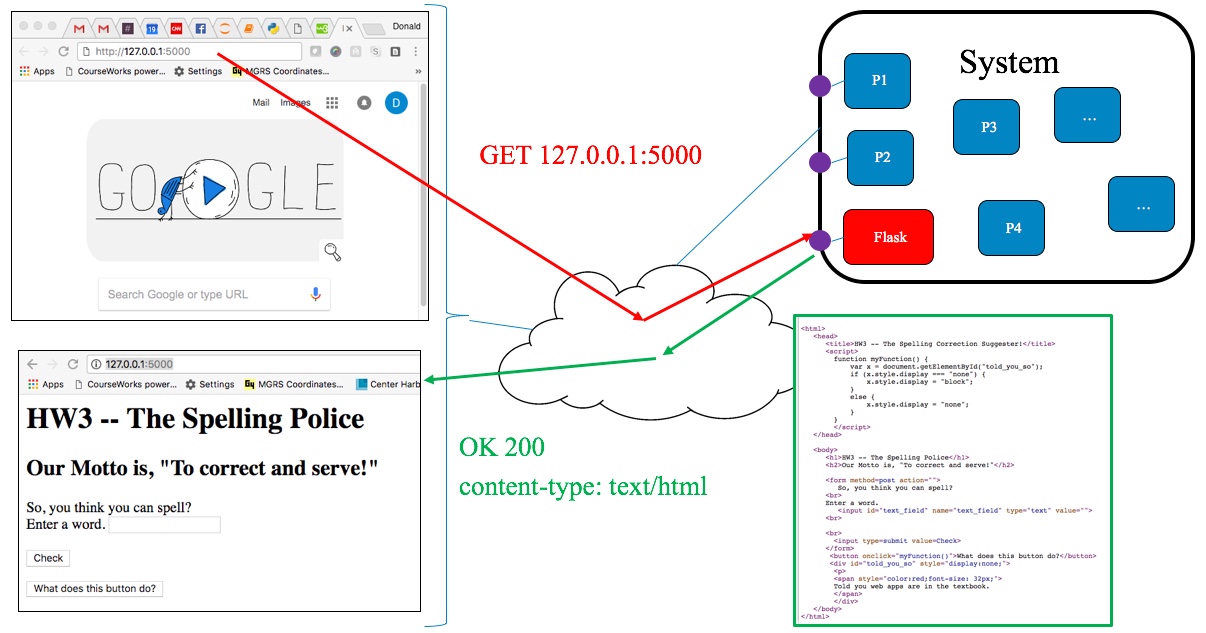 |
|---|
| Web Request |
- For HW2:
- I will give you all of the HTML and Flask program.
- Your program will simply receive requests routed to the functions.
- Implement two functions and return.
Homework 2: Spelling Correction¶
- You will implement two functions, which will use Python libraries and other functions you develop for implementation.
# 1. Check a dictionary to determine if word is correctly spelled.
# 2. If not, call a set of functions that generate "near by, correctly spelled words."
# 3. Return the 5 "best suggested corrections."
def check_word(word):
# Your code and called functions go here.
return "floccinaucinihilipilification, sesquipedalianism?"
# The user selected a correction, or entered a new correct spelling.
# We will record the correct spelling and score as a possible common correction for user.
def update_corrections(original_word, corrected_word):
# Your code goes here.
print("Correction for " + original_word + " is " + "corrected_word")Application functions
- Internal function: Read a CSV file that is a dictionary of correctly spelled words.
- A line is of the form "word,frequency,user_created,selected
- The fields mean
- word is a correctly spelled word.
- frequency is the relative frequency of the word in English and is a float between 0.0 and 1.0
- User created is the string "true" if the user entered this word as a correct and is missing other wise.
- Selected is the number of times the user has selected the word over all executions of your program.
- For example:
- "the,0,8,,4" $\rightarrow$ "the" has frequency 0.8, was not created by user and has been selected as a correction 4 times.
- "tho,,TRUE,1" means the user entered this word as a correction, and has done so once.
 |
|---|
| Dictionary Example |
- Function _checkword(w):
- If the dictionary is not loaded, calls the internal function to load.
- Checks the list holding the correctly spelled words.
- A single entry is of the form [word, frequency, user_created, selected]
- The "dictionary" is a list in which each entry is a list like the one above.
- If the word is in the dictionary, returns True.
- If the word is not in the dictionary. The function generates a set of possible corrections:
- Letters transposed.
- Letter missing.
- Space missing (word needs to be split).
- Letter needs to be changed.
- Letter needs to be removed.
- Checks the list of possible corrections in the dictionary.
- If a word is found, adds to a list of suggestions.
- If a word is not found, adds to a list of failed suggestions.
- If the list of suggestions has less than 10 suggestions
- Repeat the steps above for every incorrect word in failed suggestions. This generates a list of words that require two corrections.
- Add any correctly spelled words to the suggestion list.
- The returned result of the function is a list containing:
- Any user created word.
- The top 10 most likely suggested words. The rule is:
- If there are 5 or more words with one correction, return the ones with the 5 highest frequencies.
- If there are less than 10, return the most likely words (using frequency) with two corrections.
- If the total is still less than 10, just return the suggestions.
- Function _update_correction(old_word, newword):
- If new_word is in the dictionary, increment the number of times selected.
- If new word is NOT in the dictionary, add as a user created word.
- Update the dictionary file.
Lists¶
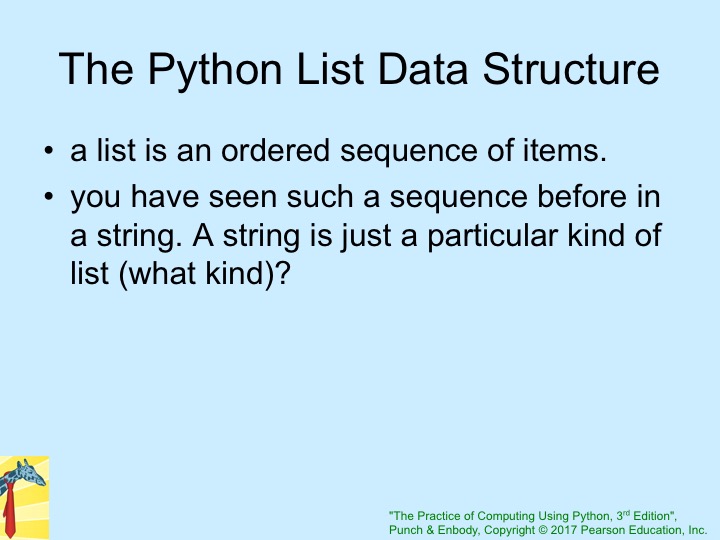
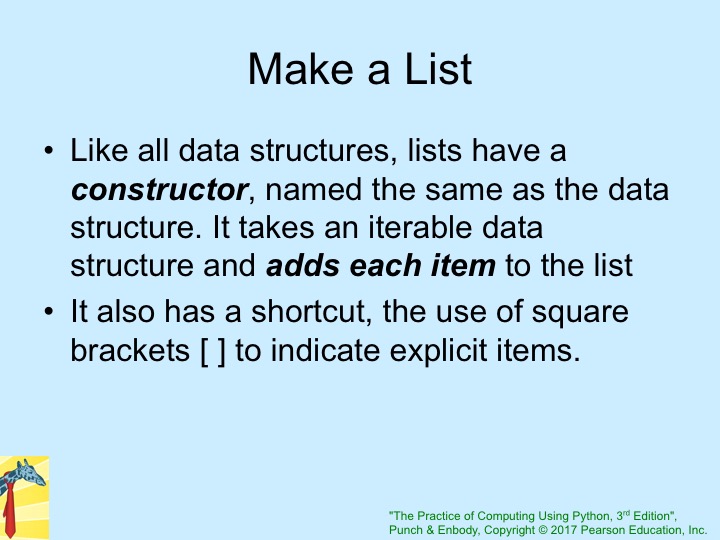
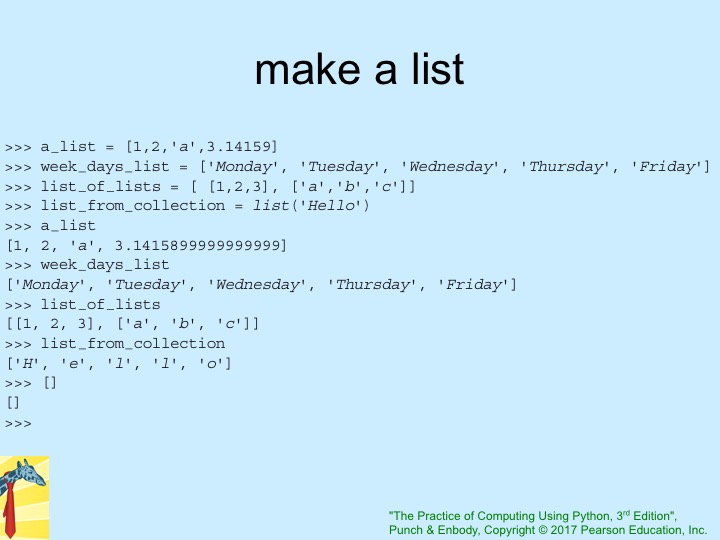
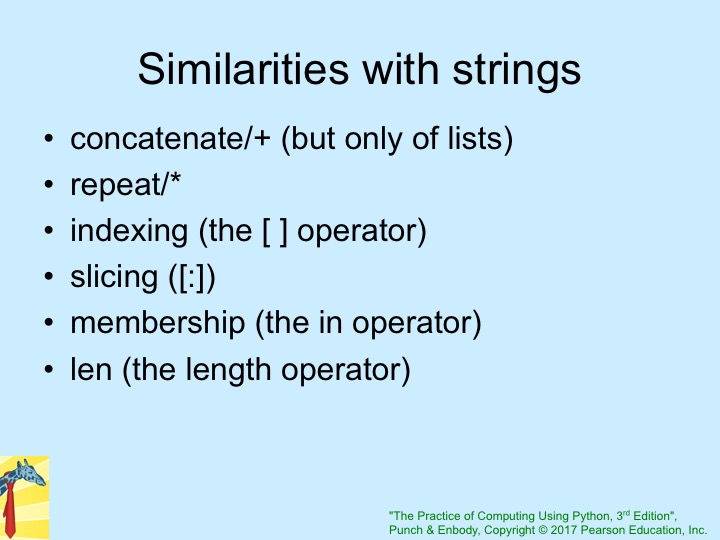
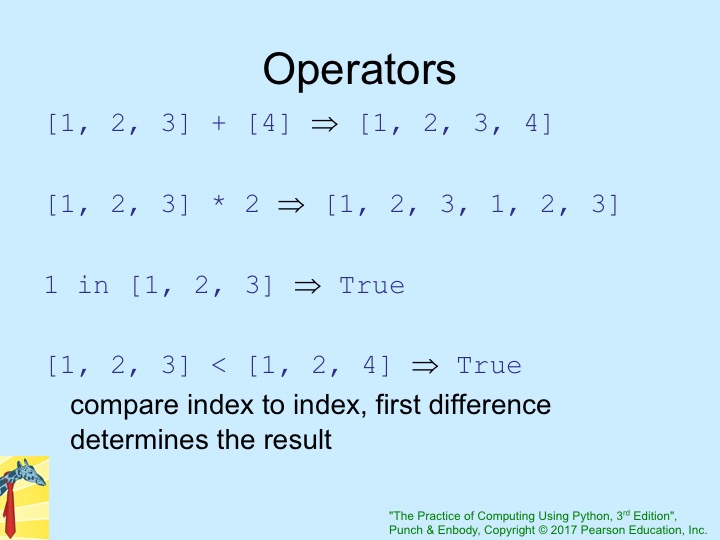
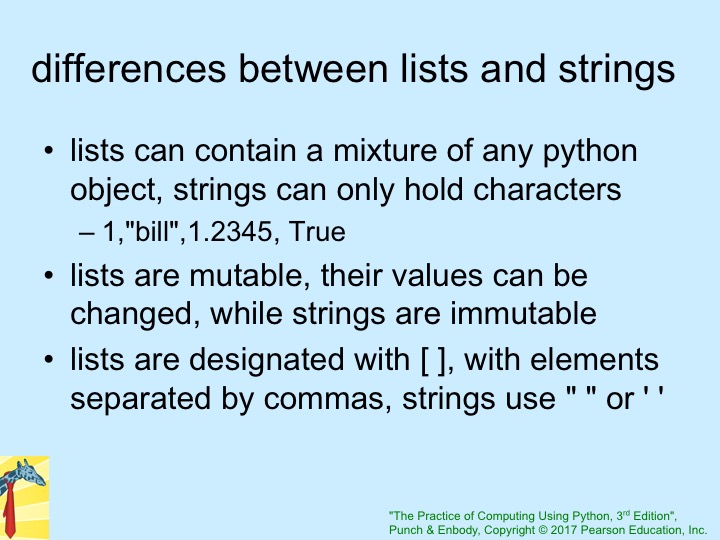
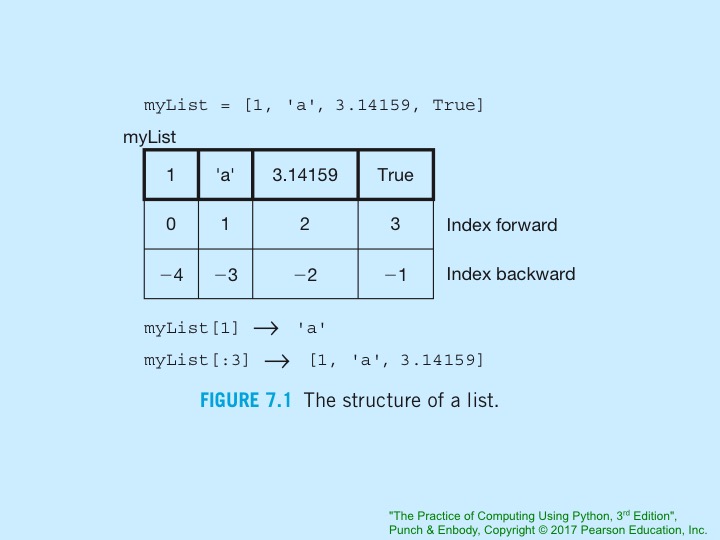
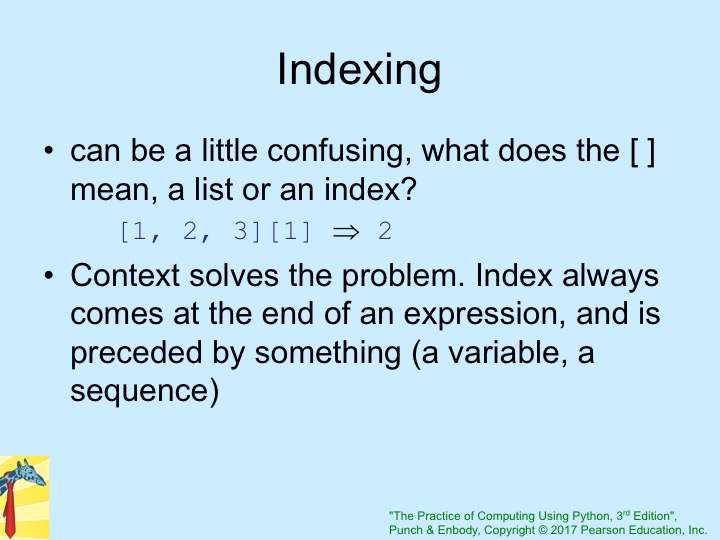
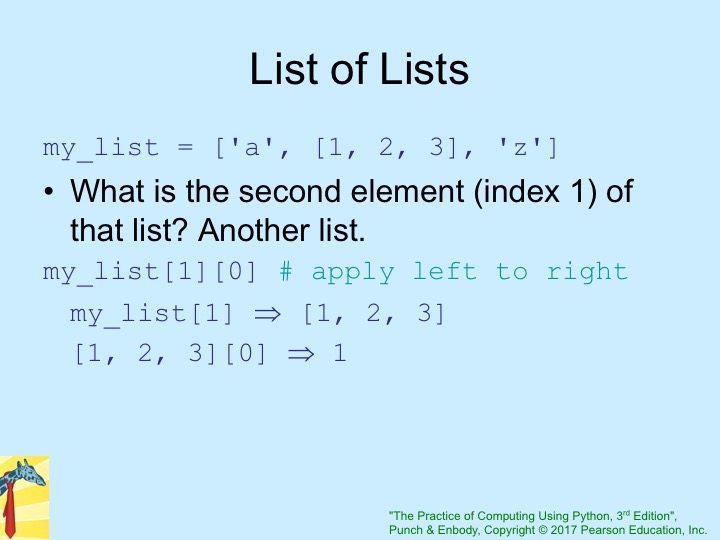
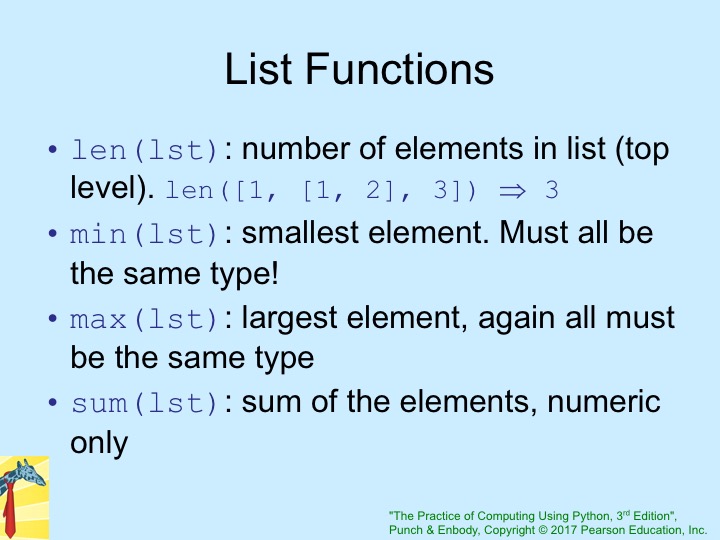
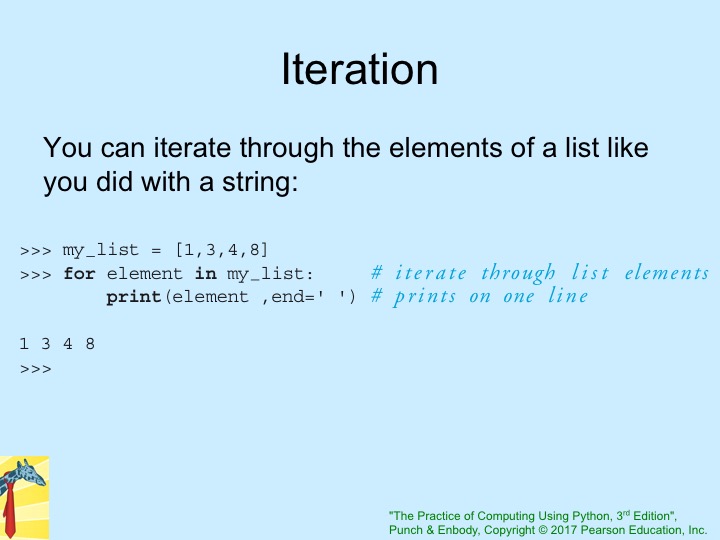
Mutability¶
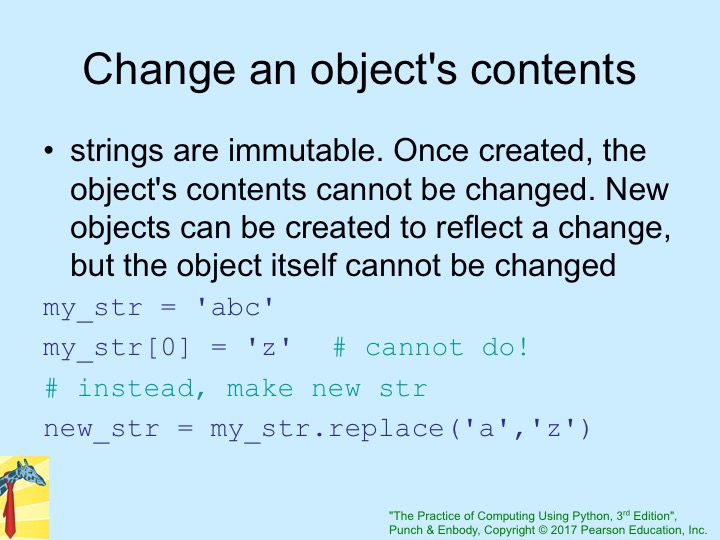
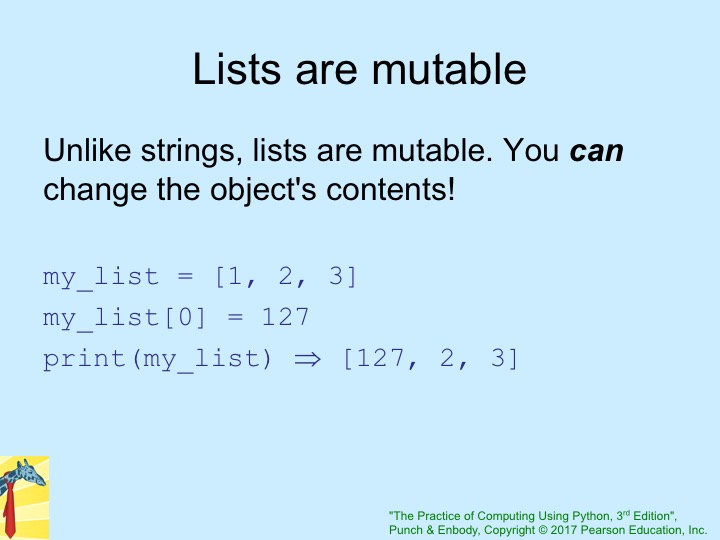
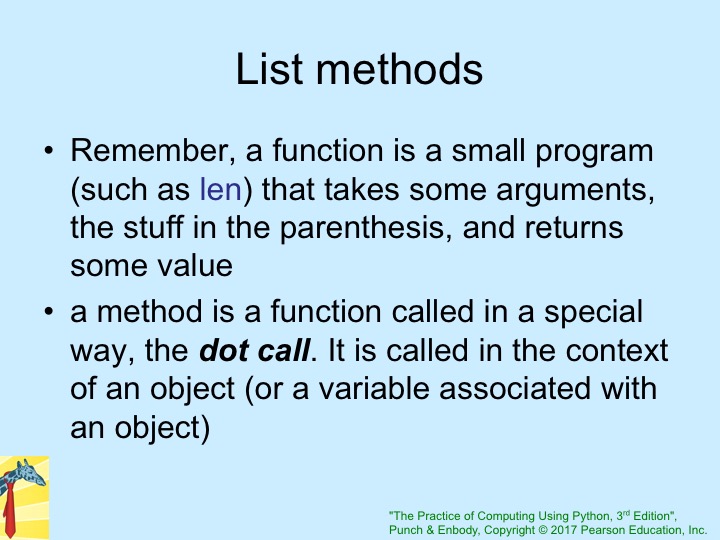
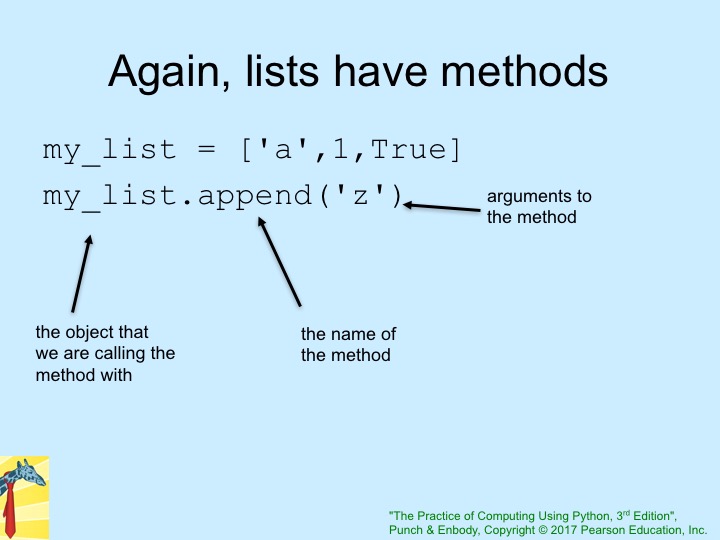
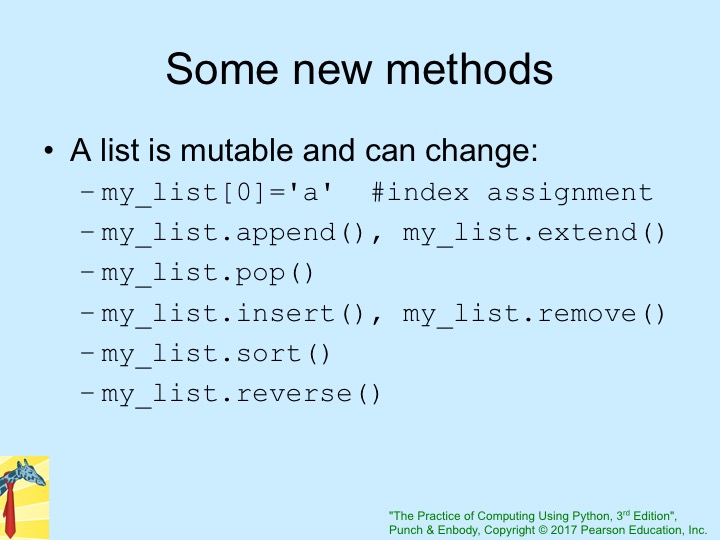
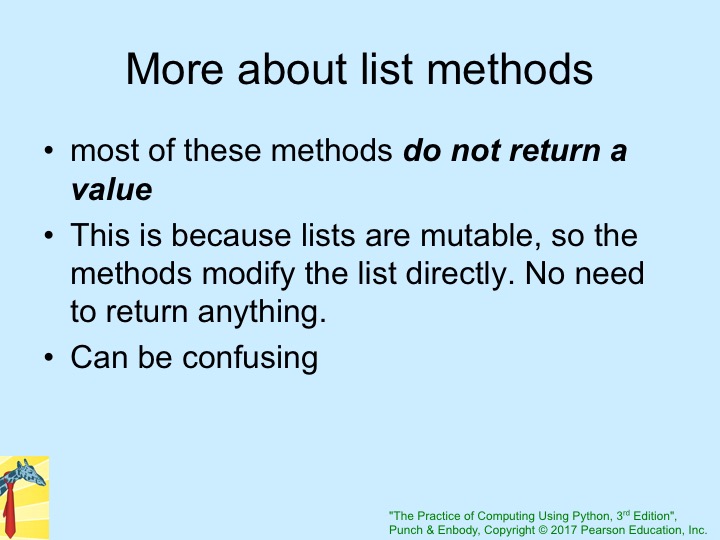
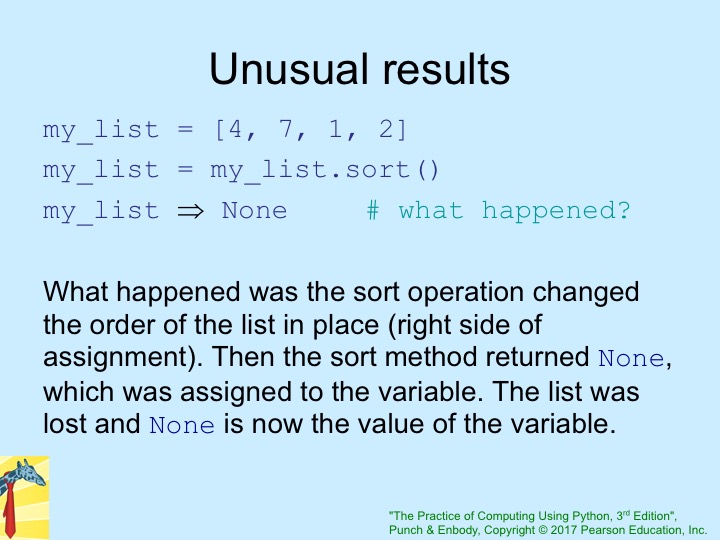
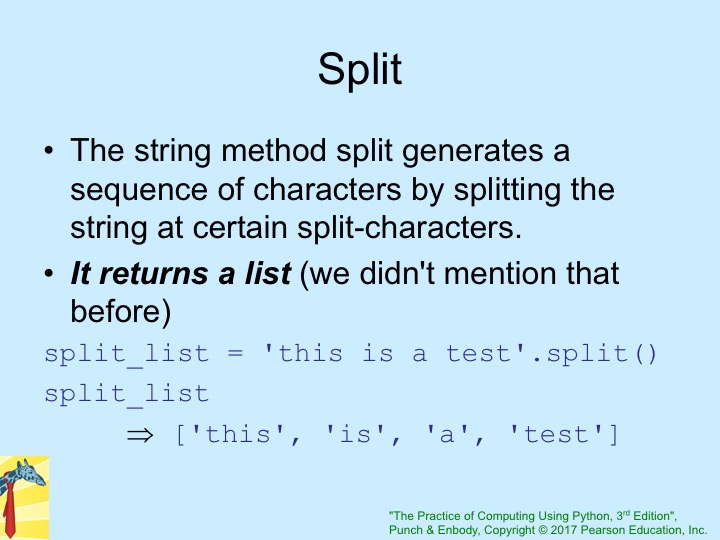
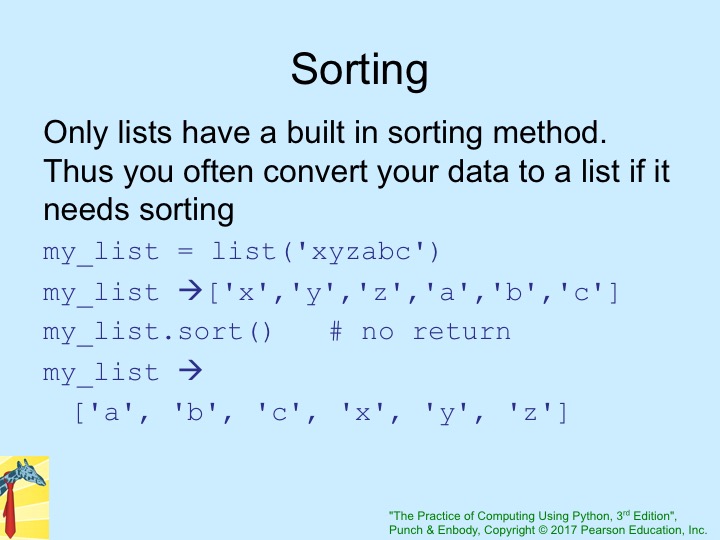
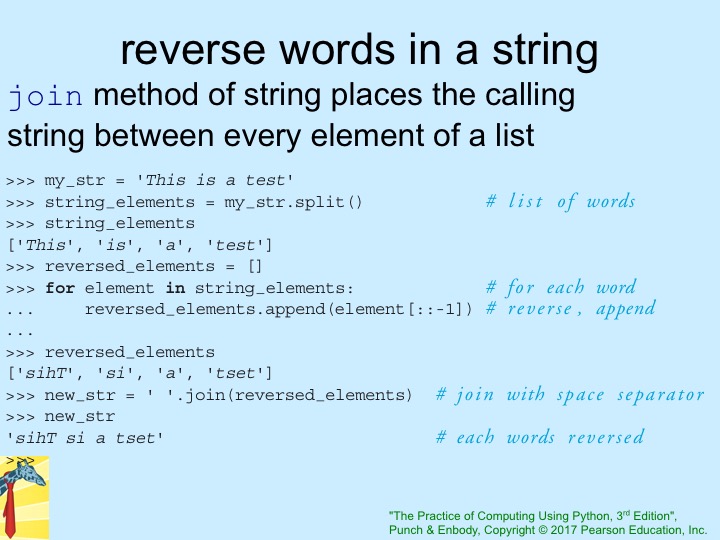
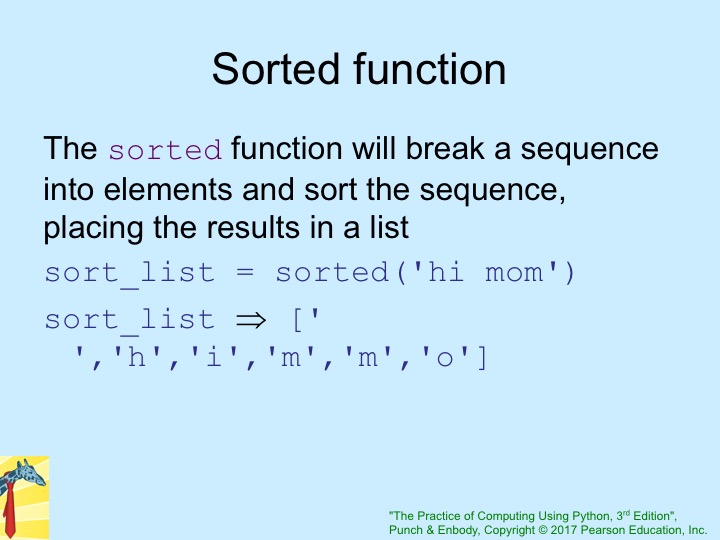
Some Examples
Sorting, Iterating, Joining
# Define a test string.
str1="quickbrownfox"
# A concise approach for expanding a string.
l1 = [a for a in str1]
print("The characters in str1 are: ", l1, "\n")
# Sort the elements in the list.
l1.sort()
print("Sorted list is ", l1, "\n")
# Convert back to a string.
str1 = "".join(l1)
print("Converted back to a string = ", str1)
Delimited Strings
line="21-Feb-2018;13:10;E1006;415 SIPA"
elements = line.split(";")
print("The individual elements are: ", elements)
Mutation
print("Elements still = ", elements, "\n")
elements[2] = "E1006 - Introduction to Computing"
print("Elements is now = ", elements, "\n")
elements.append("Donald F. Ferguson")
print("Elements is now = ", elements, "\n")
d = elements.pop(-1)
print("I popped ", d, "making elements = ", elements, "\n")
elements = [d] + elements
print("I added the thing I popped and elements. Now = ", elements, "\n")
print("Note that I had to take the single element and make a list for addition.")
Manipulating a List
d2 = elements.pop(1)
print("I removed element at 1 = ", d2, " leaving list = ", elements)
x = [0, 1, 2, "mouse", 4, 5, 6, "cat", 8, 9]
print("I have picked on elements enough. New list = ", x, "\n")
del[x[2]]
print("Element at position 2 has gone to the void. x = ", x, "\n")
x.remove("mouse")
print("I removed the element with value 'mouse. x = ", x, "\n")
try:
print("Is there another 'mouse?' If so, remove it.")
x.remove("mouse")
except ValueError as ve:
print("Got a value error. There were no mice.")
print("After attempting mouse extraction, x = ", x, "\n")
print("Where is the cat?")
print("The cat is at ", x.index('cat'), "\n")
print("Transfiguring 'cat' to 'mouse.")
x[x.index('cat')]='mouse'
print("x = ", x, "\n")
print("cats follow mice.")
x.insert(x.index('mouse')+1, 'cat')
print("Thus, x = ", x)
How do you learn all of this and understand how to use it?
The same way you get to Carnegie Hall. Practice.
Example: Words and Unique Words¶
# Copyright 2017, 2013, 2011 Pearson Education, Inc., W.F. Punch & R.J.Enbody
# Gettysburg address analysis
# count words, unique words
def make_word_list(a_file):
"""Create a list of words from the file."""
word_list = [] # list of speech words: initialized to be empty
for line_str in a_file: # read file line by line
line_list = line_str.split() # split each line into a list of words
for word in line_list: # get words one at a time from list
word = word.lower() # make words lower case
word = word.strip('.,') # strip off commas and periods
if word != "--": # if the word is not "--"
word_list.append(word) # add the word to the speech list
return word_list
def make_unique(word_list):
"""Create a list of unique words."""
unique_list = [] # list of unique words: initialized to be empty
for word in word_list: # get words one at a time from speech
if word not in unique_list: # if word is not already in unique list,
unique_list.append(word)# add word to unique list
return unique_list
################################
gba_file = open("gettysburg.txt", "r")
speech_list = make_word_list(gba_file)
print("Speech words = ", speech_list)
print("Speech Length: ", len(speech_list))
unique_list = make_unique(speech_list)
# print the speech and its lengths
print("\n\n")
print(unique_list)
print("Unique Length: ", len(make_unique(unique_list)))
a_list = [1,2,3]
b_list = [4,5,6]
a_list.append(b_list)
c_list = a_list
print("C_list = ", c_list)
b_list[2] = "foo"
print("C_list = ", c_list)
import copy
c_list = copy.deepcopy(a_list)
print("C_list = ", c_list)
a_list[0]='Cat'
a_list[3][0]="Begin"
print("B_list = ", b_list)
print("C_list = ", c_list)
Tuples¶
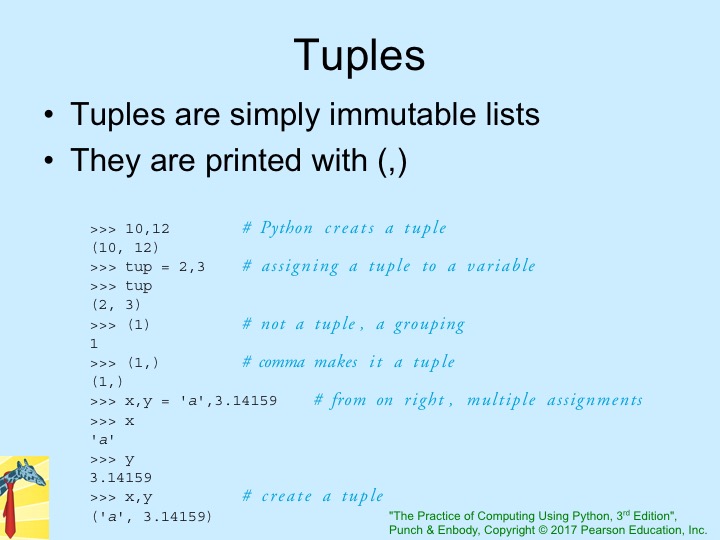
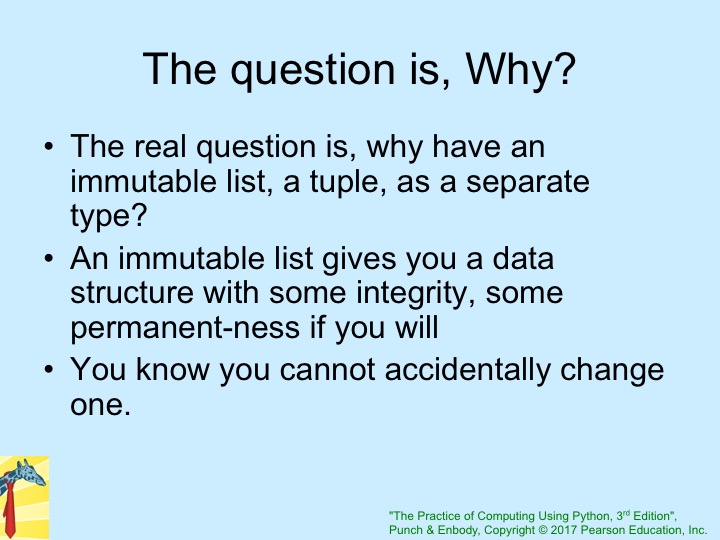
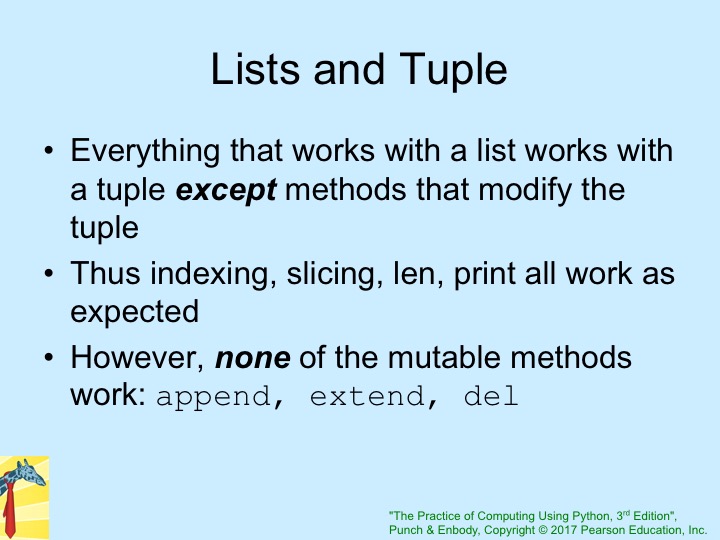
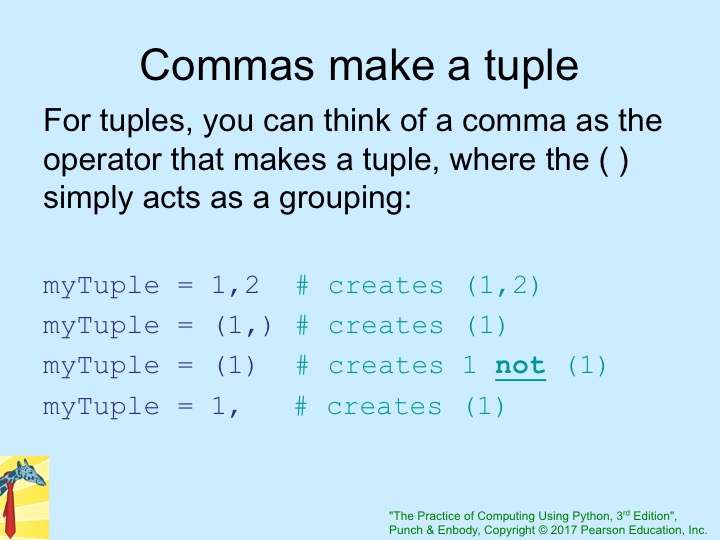
Data Structures¶


